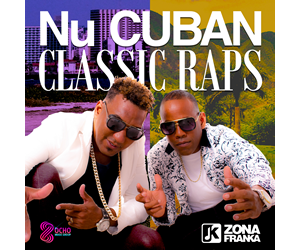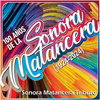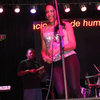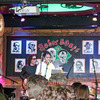Indice - Table of contents
Lo Nuevo [hide]
Tienda : Test Page 20250825
Reportes : From The St... : Page 1a
Reportes : From The St... : Page 1
Resenas : Test Review MPL
Resenas : Test revew
Musicos : New Musician
Fotos : Tom Ehrlich : test subpage
Fotos : Tom Ehrlich : test 3
Fotos : Michael Lazarus : MPL - New Gallery 1
Tienda : Methods · Métodos
Musicos : Juan Formell
Musicos : Yordamis Megret Planes
Musicos : Yasser Morejón Pino
Fotos Del Día [hide]
The Roots of Timba, Pt I - 1946-La juventud amaliana
1946 Arsenio Rodríguez - La juventud amaliana (tumbao 1)
xx0x 0xxx 0xx0 xx0x 2-3 son clave
0x0x xx00 xxx0 xxxx MIDI example
bassist: Lázaro Prieto
source: Montuneando
notes: La juventud amaliana is the first of Arsenio's tributes to the various barrios of Havana. The Cristobal Díaz discography (and the 78s themselves) identify the rhythm of these tracks as "guaguancó", but there's no rumba clave, no guagua and no interlocking conga parts. Instead, the term guaguancó refers to the style and phrasing of the singing, and the subject matter of the lyrics. The rhythm section is still playing son montuno ... or in the case of the bass, timba! This is our most unequivocal case yet of the bass marking the clave. In addition to the two notes which line up directly with the strokes of the clave, the additional underlined notes below are also strong indicators of clave direction, as we'll repeatedly confirm when we get to timba.
xx0x 0xxx 0xx0 xx0x 2-3 son clave
0x0x xx00 xxx0 xxxx bass (0=important clave indicator)
For me, one of the biggest revelations of the García book is the correlation of Arsenio's rhythms with the way the son was danced at that point in history (and apparently still is in some areas).
Describing dance steps is notoriously difficult and prone to misunderstanding, so the following MIDI demonstration uses the simplest possible chord progression with the simplest possible tresillo bass tumbao, and a two-part countoff to make it crystal clear where "1" is and where the clave is. After the groove is set up in this way, the kick drum timbre indicates where the dancers step. Try dancing along with the examples and see if your foot movements match the kick drum when it enters.
xx0x 0xxx 0xx0 xx0x 2-3 son clave
LxRx Lxxx RxLx Rxxx basic step (Casino/salsa) ("on 1")
xxLx RxLx xxRx LxRx basic step (typical son) ("on 2")
xxLx RxxL xxxR LxRx basic step (traditional son as per García)
(L=left foot; R=right foot) (kick drum timbre represents dance steps)
Juventud amaliana also gives us our first example of one of Arsenio's challengingly polyrhythmic bloques.
xxxx xxxx xPPP Pxxx (piano lead-in figure)
0x0x x0x0 xxx0 x0xx
000x xx00 0xxC xCCx
CxxC CxCx xxxx xxxx bloque (P=piano; 0=bloque; C=coro)
Most of Arsenio's classic tracks from the golden period of 1946-1951 feature a virtuousic and highly-polyrhythmic solo by either Lilí Martínez on piano, Arsenio himself on tres, or occasionally Chappottín or one of the other trumpeters. The solo usually ends with Arsenio's signature bloque lead-in phrase, x000 0xxx. The figure is usually played on the 2-side in 3-2 clave and on the 3-side in 2-3 clave, and leads directly to what most timba musicians call a bloque but which in Arsenio's day was called a cierre. It consists of everyone in the band playing the same series of punches, creating extreme rhythmic tension with a combination of cross-rhythms and deceptive harmonies. As García points out, the first 4 beats of the actual bloque have a rhythm (0x0x x0x0 xxx0 x0xx) which was used repeatedly in the subsequent decades, most famously by Tito Puente and later Carlos Santana in Oye como va.
The bloque leads to a closing section which Arsenio called the diablo, (later called the mambo by others), which contrapuntally pits the horns against the coro while the rhythm section rises to an intense climax. This type of high energy finale captured the imagination of a generation of Latin musicians and fans, spawning an extremely popular genre known as mambo. In salsa and timba, arrangers incorporate multiple such sections which are still called "mambos" today.
La juventud amaliana (tumbao 2)
xx0x 0xxx 0xx0 xx0x 2-3 son clave
xxxx xxxx xxxx xx0x (bass pickup)
xxx0 0x0x xxx0 0x0x MIDI example 2
The diablo gives us our first example of yet another arranging concept which would become critically important in timba -- the use of multiple bass tumbaos in the same montuno section.















